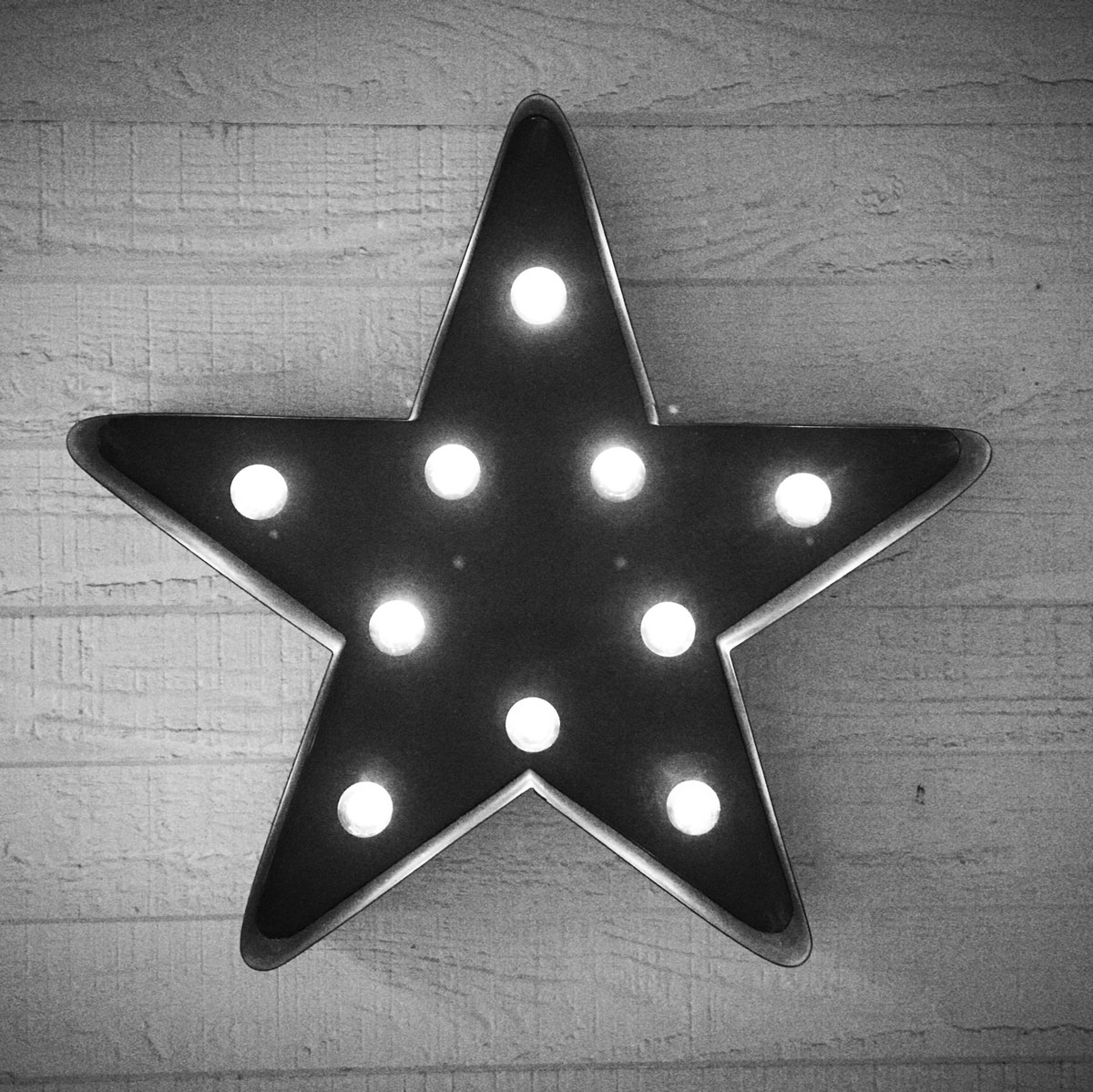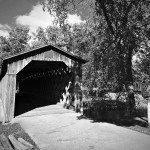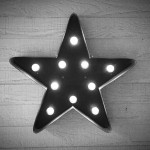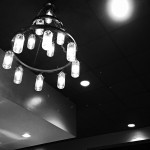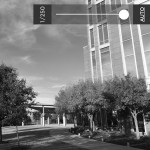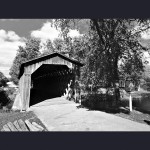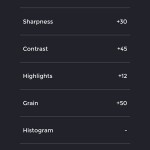There are plenty of black and white cameras available in the App Store with varying degrees of good. The best of them — SimplyB&W, Hueless, Ansel — understand not only the black-and-white aesthetic, but also how the analog history of black & white photography comes into play.
Camera Noir ($2.99) is a new high-end, black-and-white camera and editing app. The camera has nearly all of the features you would expect in a good camera app. The app’s built-in photo editor with its focus on making great black-and-white conversions has an impressive full set of tools, including full exposure, contrast, clarity, sharpening, and many more. The app has a great, clean, easy to navigate user interface in both camera and editing modes.
The photo editor has over 20 presets for a variety of great one-tap conversions. While the camera will preview your photo in black-and-white, there are no presets in camera mode.
The app’s built-in camera is excellent and contains all of the tools you would expect in a high-end camera app, including separate focus, exposure, and ISO control. The camera has two types of composition grids which can easily be toggled on and off. There is the standard rule of thirds grid and a square target in the center of the viewfinder. The camera lacks a digital zoom, which I have no problem with at all — you really should get closer to your subject or buy a telephoto lens. Some iPhoneographers may find this a frustrating omission.
The camera has a full manual mode, letting you override the automatic exposure settings. Manual override for focus, exposure, and ISO can be accessed with a tap and are easily toggled on and off. They’re easily controlled with an easy to use but out-of-the-way on screen slider.
Unfortunately, using Camera Noir in a manual mode turns the entire camera to manual. There is no priority override for exposure or ISO. Using manual mode in one means you must make manual adjustments in the other. For me, this is a frustrating oversight. There are many times where I want to change the ISO speed and let the camera do the heavy lifting for the exposure value. Currently this is not possible with Camera Noir.
The camera works in both portrait and landscape orientations. Most of the tools rotate 90° to adjust to the view. Most of them. The onscreen ISO, shutter speed, and focus sliders stay oriented to portrait mode regardless of how you hold your device.
Camera Noir Screenshots
- Camera Noir presets
- History tab
Editing Black & White Photos with Camera Noir
The photo editor has a full tool set with precise and powerful tools that you would expect to find in an advanced image editor. In addition to the basic adjustments, it also features clarity, separate shadows and highlights adjustments, and an advanced sharpness tool which allows you to adjust with a negative values. This lets the sharpness tool also act as sort of a blur tool as well. Clever.
There are also several tools which really help to make for some nice black-and-white conversions.
The power of Camera Noir’s black-and-white conversion lies in its Color Mixer cool. Unlike many other photo apps which use an analog style method of simulating color gels to convert to black-and-white, Camera Noir uses a channel mixer method which is how Adobe Photoshop for desktop handles its advanced color to grayscale conversions. Instead of filtering out colors, the mix tool allows you to adjust the intensity of eight different color channels from the source image. It’s a very digital approach. Photoshop users will love this. iPhoneographers who prefer the old school analog method may not. The two don’t behave the same. For example, applying a red filter in Simply B&W or Ansel filters out the reds in a source image, greatly enhancing blue colors. Adjusting Camera Noir’s red filter increases or decreases red colors and tones in a source image, leaving the blues alone. Although in a black-and-white app I prefer the classic analog filter style of conversion, this is not a deal breaker for me. I work in Photoshop desktop daily, so both methods work for me. But it’s something to know ahead of time to help manage expectations of the app.
There’s a large, easy-to-use histogram which makes for precise contrast and level adjustments. Unfortunately, the black point of the histogram is not adjustable. There’s no way to change or fix the black point of a photo, which is essential for fixing washed out, overexposed pics.
Where most photo apps only have one vignette style, Camera Noir has three, including the standard black or white paint overlay and a highlight priority vignette which helps to protect highlight contrast in your photos.
The film grain tool is excellent and adds a very natural looking grain to the photo — among the nicest of the latest generation of realistic film grain tools. You can adjust the size of the grain by selecting ISO 800, 1600, and even simulate superfast ISO 3200 film.
All edits are recorded in the app’s History panel. It’s an excellent implementation that lets you delete any edit, regardless of where it is in the editing process. It’s similar to Photoshop’s but a lot more intuitive to use. Adding your own preset is easy. Simply tap the red plus in the history tab.
Camera Noir has its own image gallery, where it keeps its own photos as well as images you can import from your device. If Save Edits is selected when saving finished work, all adjustments are editable as long as the photo is in Camera Noir’s gallery. Flattened, finished photos will also need to be exported from the app into device’s camera roll.
Three export sizes are supported, including full device resolution. It supports the 12 megapixel output of the new iPhone 6s devices.
Overall, the app gets a lot right, but it also gets a lot wrong.
Either shooting or editing, the app strips out all EXIF and meta data. This alone would keep me from using the app. I take pictures everywhere and rely on the location data to remind where where the photo was taken.
The camera only supports up to ISO 1200 on an iPhone 6s, making it OK but not great in low light situations. Even Hipstamatic supports over 1800 ISO.
There is no in-app help. No link to online help. No online support or tutorial. A few of the advanced functions of the editor could benefit from instructions, such as the channel mixer and the vignette tool.
Overall, controls are sometimes sticky and freeze randomly. The app crashes fairly often for me, even after reboots. Images would disappear and reappear in the gallery after editing.
The Bottom Line
Despite all of my complaints about Camera Noir, it still does a good job of creating some great-looking black & white photos. I think the app’s potential based on the current tools and how they are implemented is what frustrates me the most. I looked at the gallery of photos I’d created for this review and the end result to the viewer is without argument excellent black & white photography. The fact that you can create outstanding photographs with the app as it is deserves to be mentioned.
The effects are great, but the app gets stars off from me because the tools needs work.
I love a good black & white app and I really want to like Camera Noir. It has the potential to be great, but currently does really little significantly better than other good black & white photo apps do. Right now there’s just too much wrong with it — app instability, stripping EXIF and other metadata, fixed black point in the histogram are my three biggest complaints and will keep me from using this app for now. It felt like I was beta testing this app.
I’ll definitely keep an eye on this one and hopefully the kinks will get worked out soon.
Download Camera Noir
App Store link: Camera Noir – Vintage Noir
Camera Noir 1.0
Effects Quality/Toolbox
Resolution and Image Quality
User Interface
Price/Value
Has the potential to be a great black & white app. Version 1.0 has too much wrong with it — app instability, stripping EXIF and other metadata, fixed black point in the histogram are my three biggest complaints.

